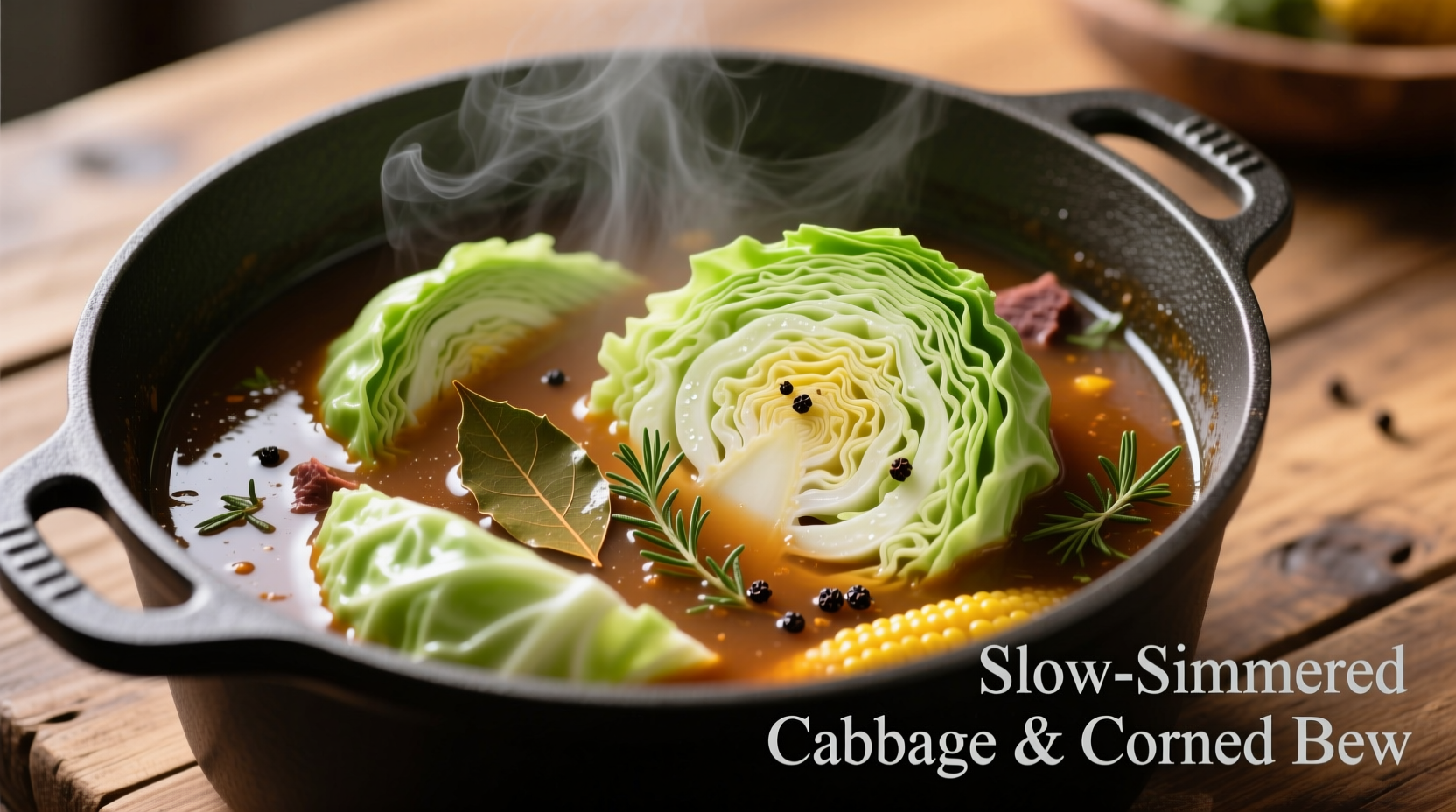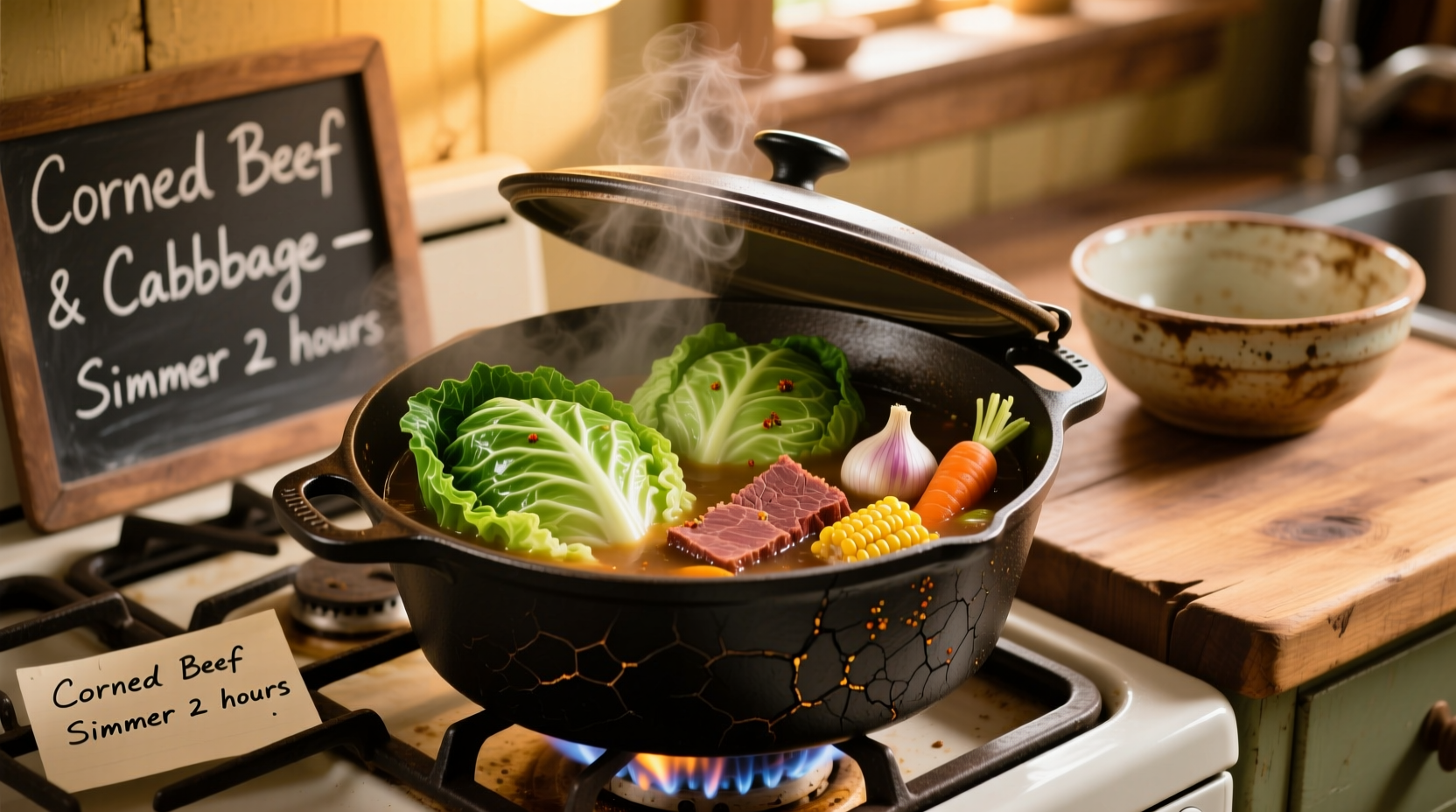Add quartered green cabbage to your corned beef pot during the final 20-25 minutes of cooking for perfectly tender yet firm results. Never add cabbage at the beginning—this prevents mushy texture while allowing it to absorb savory broth flavors.
The Perfect Cabbage Companion for Corned Beef
Corned beef and cabbage isn't just St. Patrick's Day fare—it's a harmony of textures and flavors where cabbage plays a starring role. Many home cooks ruin this classic by adding cabbage too early, resulting in sad, overcooked greens that fall apart on the plate. Getting the timing right transforms this humble side into a flavorful component that soaks up the rich beef broth while maintaining its structural integrity.Why Cabbage Timing Makes or Breaks Your Dish
Cabbage contains pectin, a natural thickener that breaks down rapidly when exposed to prolonged heat. According to USDA cooking guidelines, cruciferous vegetables like cabbage require significantly less cooking time than tough cuts of meat. When submerged in boiling liquid for more than 30 minutes, cabbage loses its cellular structure, becoming mushy and releasing unpleasant sulfur compounds.| Cooking Duration | Texture Result | Flavor Impact |
|---|---|---|
| 10-15 minutes | Firm, slightly crunchy | Subtle absorption of broth |
| 20-25 minutes | Ideal tenderness with bite | Optimal flavor infusion |
| 30+ minutes | Mushy, falling apart | Bitter, sulfurous notes |
Selecting and Preparing Your Cabbage
Choose the right variety: Green cabbage (Savoy works too) provides the classic texture and mild sweetness that complements corned beef. Avoid red cabbage—it turns an unappetizing gray when cooked with corned beef's pink brine. Prep like a pro chef:- Remove two outer layers to eliminate potential dirt
- Cut head vertically through the core
- Quarter each half, keeping core intact for structural support
- Rinse wedges under cold water, checking between leaves
Step-by-Step Cabbage Integration
When your corned beef has 25 minutes remaining: 1. Lift corned beef from pot using tongs (keep meat submerged until this point) 2. Add cabbage wedges cut-side down around the edges of the pot 3. Pour 2 cups reserved broth over cabbage if liquid level has reduced 4. Cover and simmer 20-25 minutes until knife slides in with slight resistance 5. Test one wedge by lifting—it should hold shape when transferred to plate
Avoid These Common Cabbage Mistakes
Adding cabbage too early: Corned beef requires 2.5-3 hours of simmering, but cabbage needs just 20-25 minutes. Starting them together guarantees overcooked results. Cutting into small pieces: Wedges maintain structure better than shredded or chopped cabbage. The core acts as a natural binder during cooking. Overcrowding the pot: Leave space between wedges for even broth circulation. Cook in batches if necessary—crowded cabbage steams instead of simmering in flavorful liquid.Context-Specific Cooking Adjustments
Your cooking method affects cabbage timing:- Stovetop: Add at 25-minute mark (most consistent results)
- Slow cooker: Add during last 90 minutes on HIGH or 2 hours on LOW
- Instant Pot: Quick release pressure, then add cabbage and simmer 10 minutes











 浙公网安备
33010002000092号
浙公网安备
33010002000092号 浙B2-20120091-4
浙B2-20120091-4